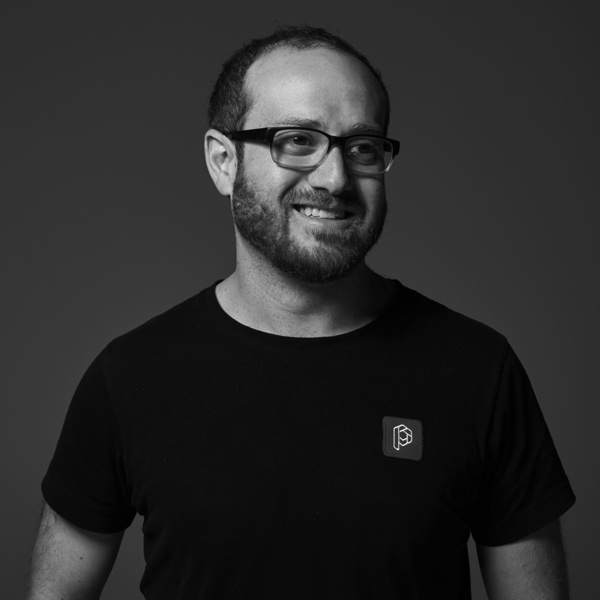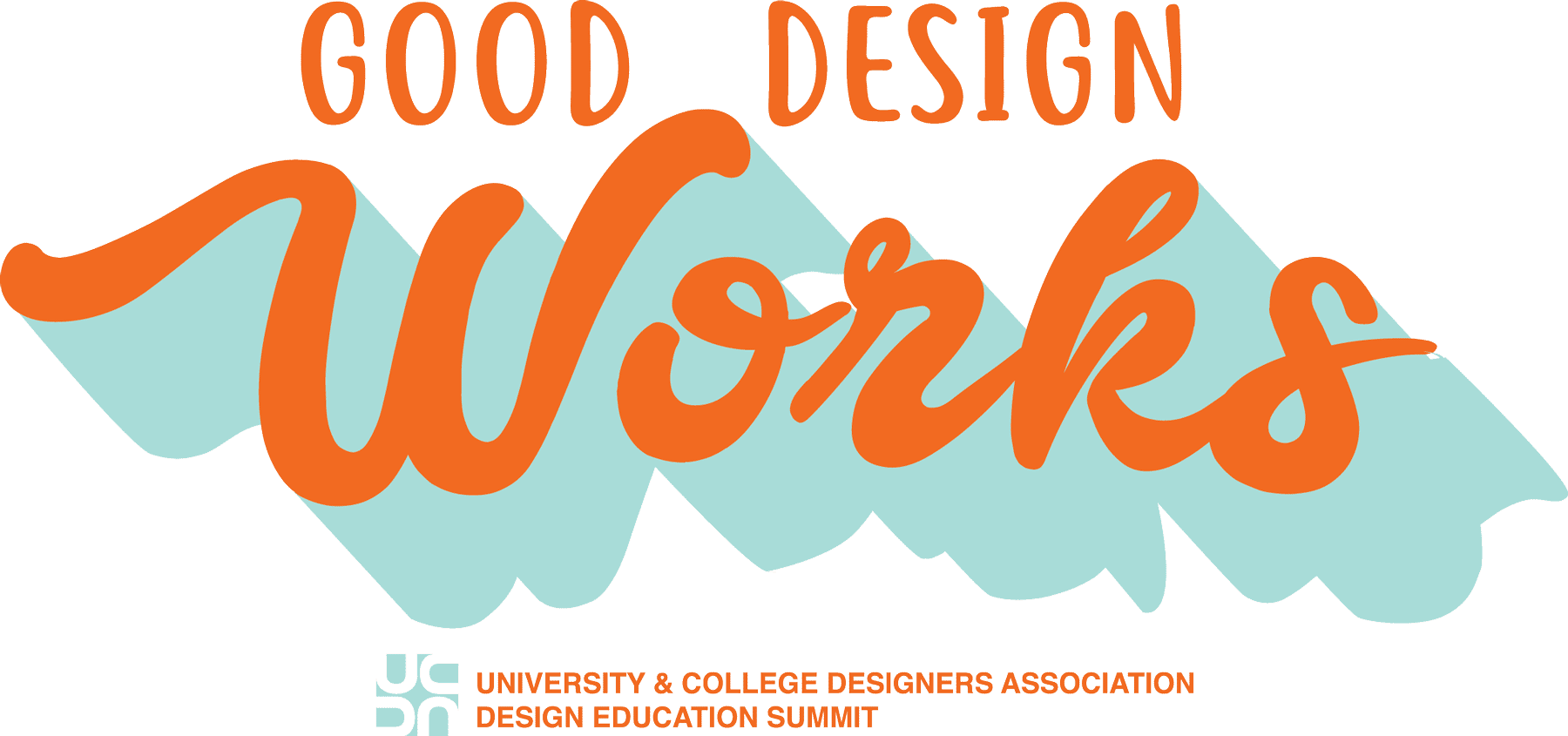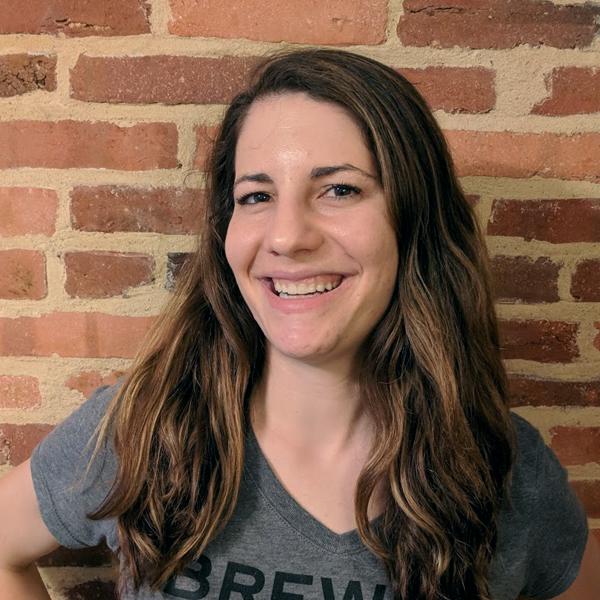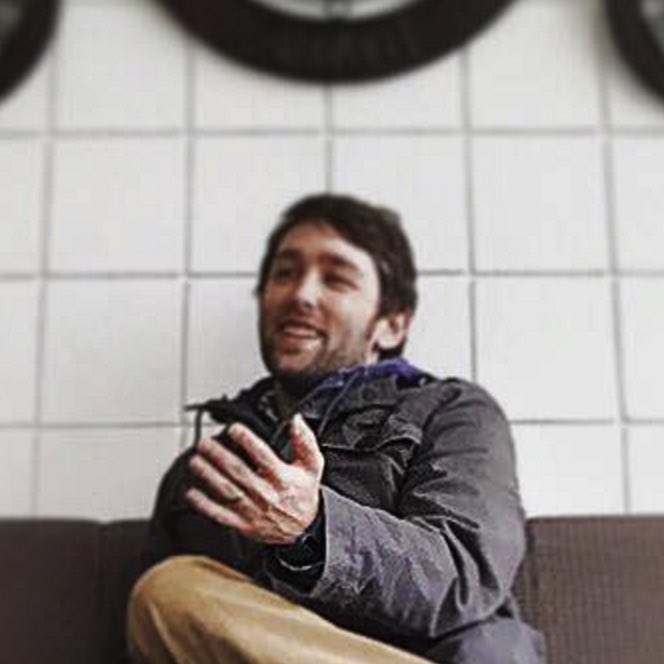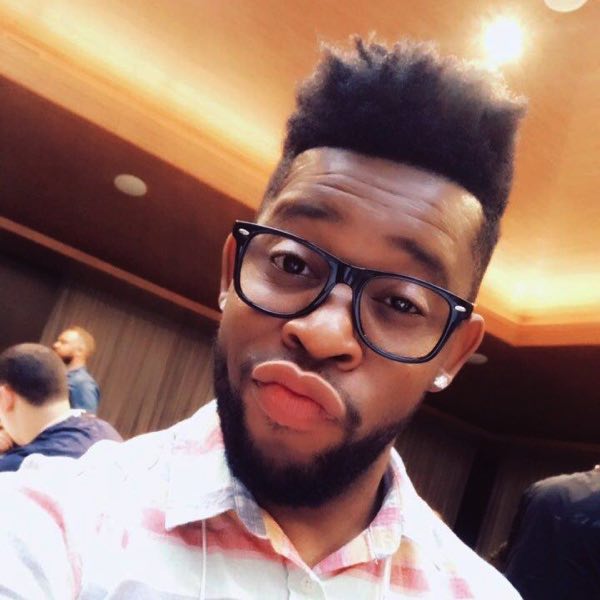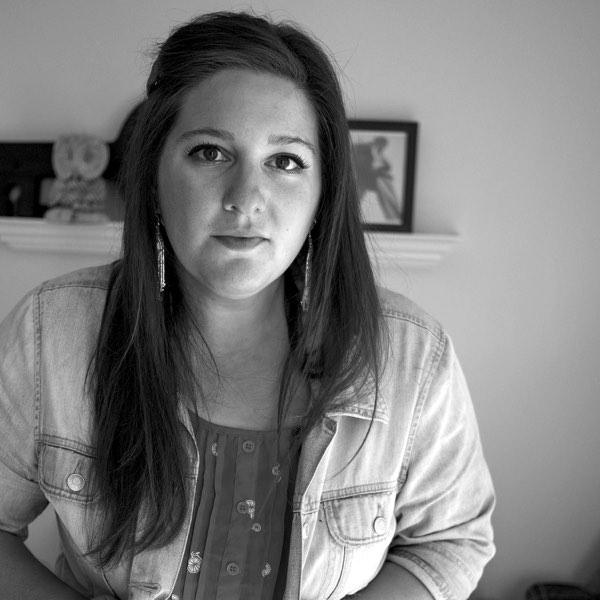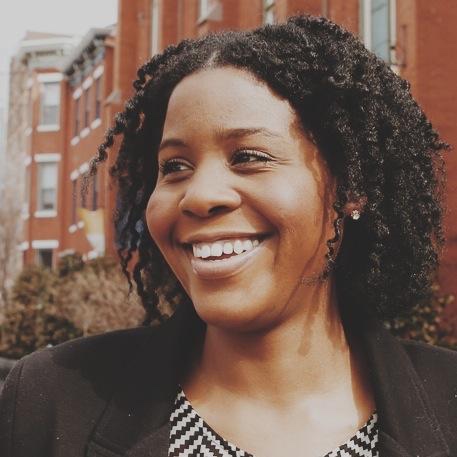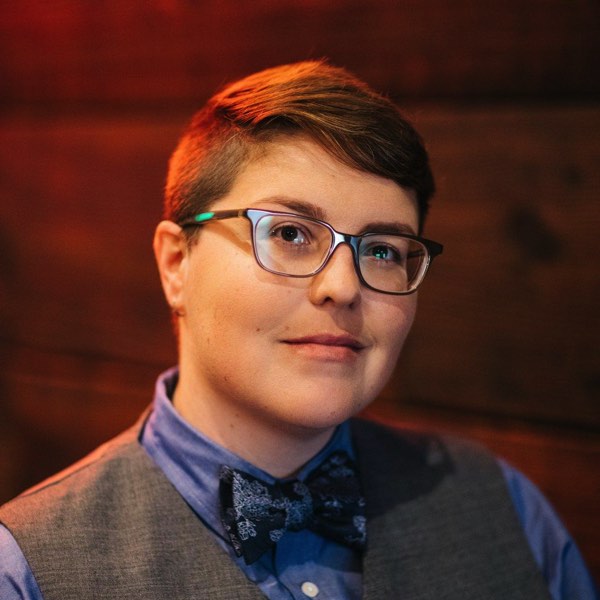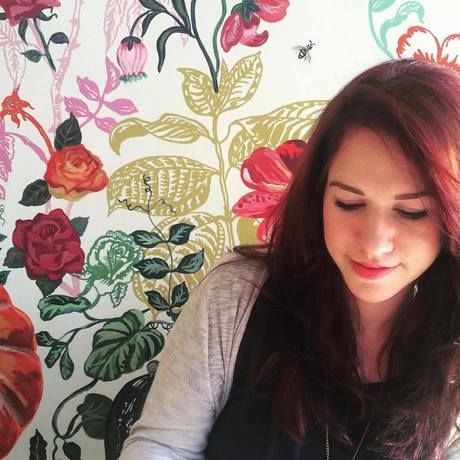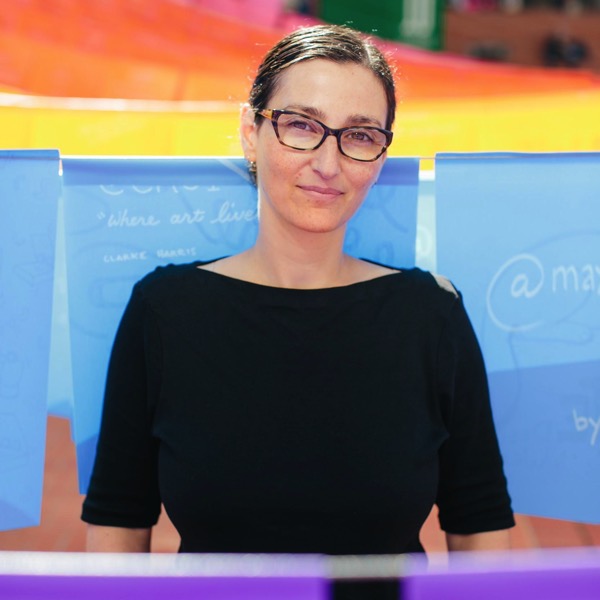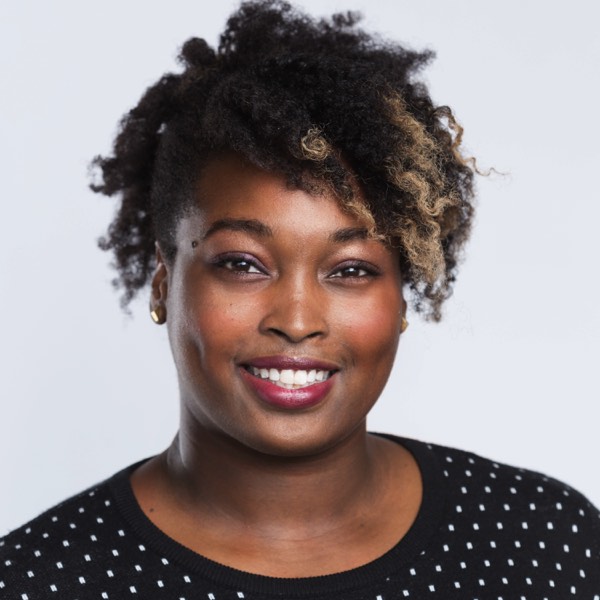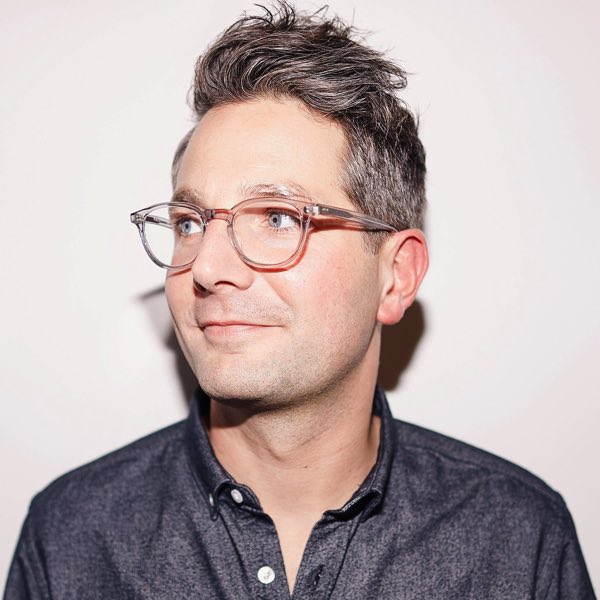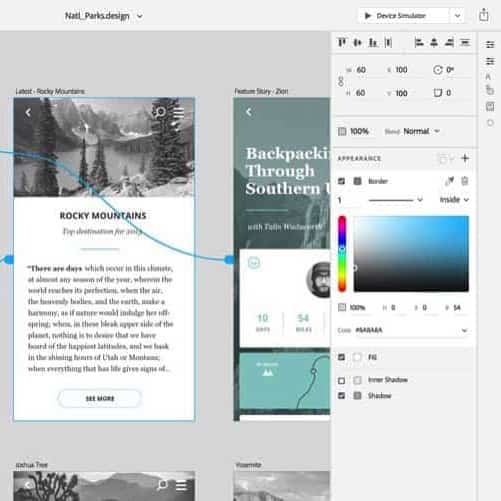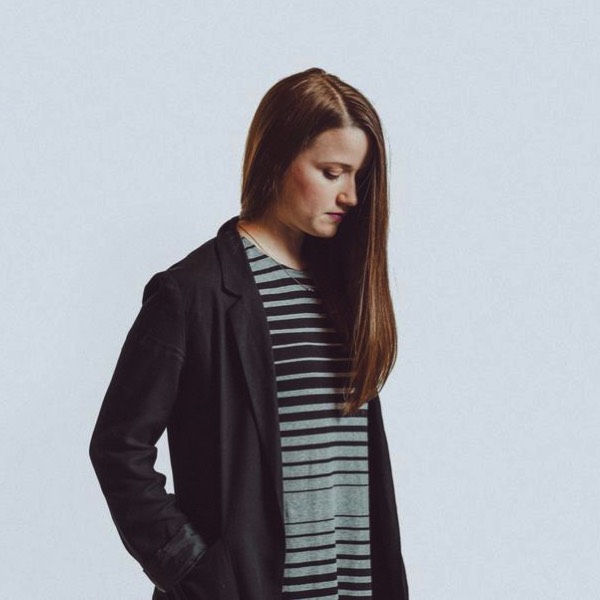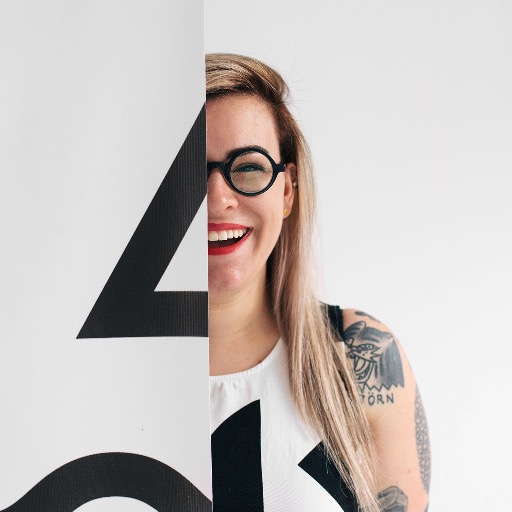Welcome to the Archives of Design Edu Today, the bi-weekly podcast series discussing the necessary competencies to be a successful designer in a contemporary, screen-based interactive world.
-
Episode 64
The Differences Between Skinning and Designing with Heather Quinn
![]()
In this episode Heather Quinn, Professional Lecturer at DePaul University, joins Gary Rozanc to discuss the differences between skinning and designing, her journey from pre-responsive design to post responsive design, and what she’s teaching in the classroom. Heather also discusses how she is using a grant to help determine the best practices in web design to update DePaul’s curriculum.
-
Episode 63
Lessons Learned from 200 Design Interviews with Dave Senior
![]()
In this episode Dave Senior, Chief Growth Officer, and Partner at Playground Inc., joins Gary Rozanc to discuss his article “What I learned from 200 design interviews.” This episode goes into the nuts and bolts of the article Dave to answer specific questions about the transition from student to professional and we cover questions such as what Dave needs to see in a portfolio to know that a student can make the shift from print to digital, what format a portfolio needs to be in for in-person interviews, and self-initiated projects.
-
2018 Listener Survey
-
Episode 62
Graphic Design Student and Graphic Design Professional Q&A Discussion
In this episode Design Edu Today celebrates its three year anniversary. To mark the anniversary Lauren Spielman and Kelly Stelmack, students in UMBC’s Graphic Design program, take over as co-hosts to ask designers Megan Gileza and Kendall Kiernan of Baltimore area design firm Orange Element questions about working in the industry. Kelly and Lauren asked a wide range of questions about working professionally such as what type of skills are necessary for the different types of design positions, what’s the average turnaround time on a typical project, and what skills do professionals want students to come out of school with. The bulk of the conversation centered around how to work with a client. From interviewing them in the initial discovery meeting to showing process along the way to selling the final design, all aspects of client interactions were covered.
-
Episode 61
Lessons Learned Hosting Revision Path from Diversity to Design with Maurice Cherry
![]()
In this episode Maurice Cherry, Content Marketer at Fog Creek Software, and host of the award winning podcast Revision Path joins Gary Rozanc to discuss what he has learned over 5 years and 240 episodes of hosting Revision Path. From ways Design Educators can promote diversity into the classroom to the systemic problems facing black students Maurice shares his insights. In the second half of the conversation Maurice talks about his own design practice, how studying Math and English makes him a better designer and how much the industry have changed in the past 20 years.
-
May 21–22, 2018
UCDA Design Education Summit: Good Design Works
![]()
I’m really excited to bring Design Edu Today to UCDA’s annual Design Education Summit that will take place in McDonough Museum of Art, Gallery B. While I’ve recorded many episodes in person, hosting multiple guests, this will be the first time I’ll be streaming the episodes live. While I do have some preplanned content, I’m also open to impromptu conversations as well. My only rule is no interviews during the speaking sessions. We are all here to learn from each other and give everyone a platform to show innovation in the classroom.
-
Episode 60
Working Remotely on an In-house Team vs. Working at a Large Digital Agency with Steph Loughran
![]()
In this episode In episode 60 of Design Edu Today, Steph Loughran, Art Director at Outstand, joins Gary Rozanc to discuss the differences between working remotely on an in-house team versus working at a large digital agency. Along the way Steph talks about the different approaches to responsive web design including her love for element collages. The conversation also covers creating animations and micro interactions and the industries strong preference for Sketch over other layout programs.
-
Episode 59
The Differences Between Agency and Freelance Life and Design Fundamentals with Chris Cashdollar
![]()
In this episode Chris Cashdollar, Principal of Cashdollar Design, joins Gary Rozanc to discuss a wide array of topics. The conversation starts off with a discussion on ways to better prepare students for careers as freelance designers such as working with popular CMS templates, the ubiquitous need for writing skills to persuasively promote your work, and the need for internships to augment classroom learning. Along the way, Chris also discusses where designing Micro Interactions fits into the overall design process and the fundamental differences between solo designer software programs like Illustrator and Photoshop and collaboration based programs like InVision and Sketch that reflect how the industry operates today.
-
Episode 58
Using Print Design Principles in Interactive Design Layouts with Lynn Fisher
![]()
In this episode Lynn Fisher, Phoenix based Artist and Designer currently working at andyet, joins Gary Rozanc to discuss her unique approach to responsive design. The conversation goes into how CSS properties such Grid give designers the same control over their screen based designs as they have over print design. Lynn also talks about maintaining side projects as a way to learn and grow new skill sets. The conversation wraps up with Lynn sharing her approach to illustration, UX/UI design, and her Freelance work.
-
Episode 57
The Education of an I-Shaped versus T-Shaped Student with Meena Khalili
![]()
In this episode Meena Khalili, Assistant Professor at the University of Louisville, joins Gary Rozanc to discuss the education of an I-Shaped versus a T-Shaped student. Meena goes in-depth on what skills actually constitute a T-Shaped students including where coding and UX/UI fit on the T-Shaped diagram. The discussion also covers startling statistics from the Department of Labor on the decline of Graphic Design jobs and the exponential growth of Interactive Design jobs. Finally, we end the conversation by discussion how design education can lead the industry, not follow it.
-
Episode 56
How Students Should Present Their Work Online and In-person with Sam Borowy
![]()
In this episode Sam Borowy, Senior Experience Designer at T. Rowe Price, joins Gary Rozanc to discuss how students present their work online and in-person during interviews. Sam goes in-depth on how students should prepare each for their specific use including using narrative. Sam also discusses what skillsets she specifically looks for when hiring both user experience and visual designers. Finally the conversation wraps up with a discussion on what skills design educators should be focusing on more. Hit: Responsive Design!
-
Episode 55
Interdepartmental App Design and Development Collaborations with Neil Ward
![]()
In this episode Neil Ward, Assistant Professor of Graphic Design at Drake University, joins Gary Rozanc to discuss collaborations with students in the Art & Design, Computer Science and Journalism departments at Drake to design and develop Android Apps. Neil goes into details on logistically making the collaboration work for scheduling, matching students’ skill levels across departments, and the benefits and pitfalls of the project. Neil also discusses how this project fits into the overall design program at Drake and where UX theory would best fit into a design program.
-
Episode 54
Introducing Collaboration and Coding Concepts Early on to Interactive Design Students with MiHyun Kim
![]()
In this episode MiHyun Kim, Assistant Professor of Communication Design at Texas State University, joins Gary Rozanc to share her own questions about teaching interactive design. The questions MiHyun Kim suggested lead to an in-depth conversation about non-traditional ways of introducing coding concepts such as computer games to make learning languages like HTML, CSS, and much easier. MiHyun Kim also shares how she teaches app, user experience, and responsive web design across three courses. Finally, the conversation wraps up with a discussion about dynamic data visualization and if it’s appropriate for undergraduate students.
-
Episode 53
A Design Educator’s View on Front-end Development, Portfolio Courses and More with Yana Sakellion
![]()
In this episode Yana Sakellion, Associate Professor at the American University in Washington D.C., joins Gary Rozanc to discuss the Student Web Awards and why in an open source industry with a lot of self taught professionals, the there is such a lack of sharing of course material and student work amongst interactive and web design educators. Yana also shares her perspective on the elusive balance of visual design and front-end development training in design programs. Finally, Yana also discusses a variety of ideas including the value of using WordPress templates, where to introduce portfolio courses, and approaches to web design in the classroom.
-
Episode 52
Interactive Design Educator and Industry Professional Round Table Discussion
In this episode I’m taking a different approach in the form of a round table discussion between an industry professional and interactive design educators. The reason for the departure in this episode stems from the opportunity of having two interactive design educators presenting at the annual SECAC, formerly the Southeastern College Art Conference, in the same room with an actual practicing designer at a real life agency in Columbus, Ohio. Coincidentally, at the same time, the AIGA Design Educators Community just released a draft version of their Designer of 2025 and I think it’s great to get everybody in the room at the same time and talk about the report If you’ve been listening to the podcast, it’s basically been about what I think we should be teaching and me asking professionals or educators to get their feedback. I think this format gives me a great chance to get somebody else talking about what they think should be taught and then getting interactive design educators and professionals together to say, “Yeah, these are the things we really need to target immediately!”, or “These things aren’t really relevant to us on a day to day basis.”, and follow up from the education perspective, on how do we incorporate that?
-
Episode 51
Part 2: Building an Interactive Design Curriculum with Real World Projects Funded by Grants with RJ Thompson
![]()
In this episode In part two of episode 51 RJ Thompson, Assistant Professor specializing in Graphic & Interactive Design at Youngstown State University, joins Gary Rozanc to discuss the four interactive courses in YSU’s BFA design program. RJ goes into specifics on how each course builds off each other and even empowers students by giving them entrepreneurial skills. RJ also shares how he leverages grants and grant writing to create real world scenarios for student projects.
-
Episode 51
Part 1: Building an Interactive Design Curriculum with Real World Projects Funded by Grants with RJ Thompson
![]()
In this episode In part one of episode 51 RJ Thompson, Assistant Professor specializing in Graphic & Interactive Design at Youngstown State University, joins Gary Rozanc to discuss the four interactive courses in YSU’s BFA design program. RJ goes into specifics on how each course builds off each other and even empowers students by giving them entrepreneurial skills. RJ also shares how he leverages grants and grant writing to create real world scenarios for student projects.
-
Episode 50
The Differences and Commonalities Between User Experience, Interactive, and Print Design with Tim Hykes
![]()
In this episode Tim Hykes, User Experience Designer at Wells Fargo Advisor, joins Gary Rozanc to discuss the differences between User Experience Design, Interactive Design, and Print Design. The conversation goes into specific details on the common thread between the three distinct professions and how print design educators can bring User Experience Design into the classroom. Tim also shares his insights on how the design industry has radically changed in the past twenty years and that change’s effect on skills like craft and file management.
-
Episode 49
Two Years of Takeaways From Interviewing Interactive Industry Experts with Gary Rozanc
![]()
In this episode Gary Rozanc reflects on what he has learned from hosting the Design Edu Today podcast on its two-year anniversary by revealing his top five takeaways including the right amount of HTML and CSS for designers, the new tools for interactive designers, what designers are actually making today, design being a team sport again, and a contemporary process that includes design systems.
-
Episode 48
Part 2: The Ins and Outs of Ux and Ui Bootcamps Vs. Traditional 4 Year Graphic Design Programs with Mike Joosse
![]()
In this episode In part two of episode 48 Mike Joosse, Partner and Community Director at DESIGNATION, joins Gary Rozanc to discuss the ins and outs of UX and UI bootcamps vs. traditional 4 year graphic design programs, and the similar struggles that both face when training emerging designers. The discussion goes in depth on the ideal students for bootcamps, working with real clients on real projects, and built in assessments to keep the curriculum cutting edge.
-
Episode 48
Part 1: The Ins and Outs of Ux and Ui Bootcamps Vs. Traditional 4 Year Graphic Design Programs with Mike Joosse
![]()
In this episode In part one of episode 48 Mike Joosse, Partner and Community Director at DESIGNATION, joins Gary Rozanc to discuss the ins and outs of UX and UI bootcamps vs. traditional 4 year graphic design programs, and the similar struggles that both face when training emerging designers. The discussion goes in depth on the ideal students for bootcamps, working with real clients on real projects, and built in assessments to keep the curriculum cutting edge.
-
Episode 47
Finding the Right Balance Between Teaching Visual Design, Front-end Development, and User Experience with Lauren Meranda
![]()
In this episode Lauren Meranda Assistant Professor of Graphic Design at Judson University joins Gary Rozanc to discuss the different approaches to teaching web and interactive design within a traditional graphic design program. We go into specifics on the difficulties of finding the right balance between teaching visual design, front-end development, and user experience within a limited number of credits and finish up the conversation discussing just how many classes would be ideal to teach the three distinct, but interrelated disciplines.
-
Episode 46
The Difference Between User Experience Design and Service Design with Ji Su Hiatt
![]()
In this episode Ji Su Hiatt Experience Designer at Capital One joins Gary Rozanc to discuss the difference between user experience design and service design and just how much visual designers need to embrace these disciplines. We also cover more in depth the different types of user research and how it’s used at Capital One, and discuss the role bootcamps such as the Iron Yard and Generally Assembly play in the role of user experience education. Finally, we talk about what makes a good user experience design portfolio.
-
Episode 45
The Education Necessary for Someone to Become a User Experience Designer with Rachel Inman
![]()
In this episode Rachel Inman UX Designer at Google joins Gary Rozanc to discuss the education necessary for a someone to become a User Experience Designer. We go into specifics on the different education paths open to students, and what is specific to User Experience Design that can be applied to all forms of design from graphic design to industrial design. Finally, we talk about the types of information gathered by the UX team and how it could be a basis to start graphic design projects from.
-
Episode 44
The Core User Experience Design Principles Graphic Design Educators Should Be Teaching with Karelia Jo Moore
![]()
In this episode Karelia Jo Moore Experience Lead at Huge joins Gary Rozanc to discuss what makes User Experience Design different from Interactive Design. We will also discuss the User Experience Design process and how it fits into the overall design process. We finish up the conversation talking about the specific User Experience Design principles Design Educators should be teaching to Interactive Design students.
-
Episode 43
The Ins and Outs of Designing a Political Campaign With Marne Pike and Mike Brophy
![]()
![]()
In this episode Marne Pike Chief Operating Officer and Senior Digital Strategist, and Mike Brophy Creative Director at Veracity Media join Gary Rozanc to discuss the process behind designing a political campaign for an individual and the process designing for an organization. We go in-depth on digital strategy, interactive design, and website development and how those different disciplines fit into the entire project.
-
Episode 42
The User Experience Design Process and Its Fits Into the Overall Design Process with Anne Petersen
![]()
In this episode Anne Petersen Director of User Experience at Fastspot joins Gary Rozanc to discuss what makes user experience design different from interactive design. Anne also describes the user experience design process in detail and how it fits into the overall design process. Anne finished the conversation talking about what user experience design principles design educators should be teaching to interactive designers in the classroom.
-
Episode 41
The Ins and Outs Of How Designers and Developer Work Together with Alexis Findiesen and Zaid White of CHIEF
![]()
![]()
In this episode Alexis Findiesen Senior Developer, and Zaid White Senior Art Director at CHIEF join Gary Rozanc to discuss the ins and outs of how designers and developer work together. The discussion goes into the details of when they work side by side, what kind of files they hand off to each other, and how micro interactions are designed and developed. Alexis and Zaid also share how their academic backgrounds, different from what their daily work, lead them to where they are today.
-
Episode 40
The Entry Level Designer’s Struggle to Keep Up the Necessary Work Pace with Kelly Driver
![]()
In this episode Kelly Driver, Senior Interactive Designer at idfive, joins Gary Rozanc to discuss the interactive design process including how designers and developers work together, how much HTML and CSS designers really need to know, and how entry level designers have trouble keeping up with the pace necessary to be successful in the industry.
-
Episode 39
The Interactive Design Process and Curating the User’s Journey with Vijay Mathews
![]()
In this episode Vijay Mathews, W&CO Co-founder, joins Gary Rozanc to discuss the interactive design process for the Newark Walks app. The conversation goes into specific details on curating the user’s journey through Newark, how designers and developers work together, who creates the content and the production timeline from initial client meeting to product launch. We also discuss why the Newark Walks was an Android/iOS app instead of a web based app.
-
Episode 38
The Differences Between Brand Design and User Experience Design with Robyn Kanner
![]()
In this episode Robyn Kanner, UX Designer at Amazon, joins Gary Rozanc to discuss non-traditional paths to becoming a graphic designer and the differences between Brand Design and User Experience Design. We will also go in depth about creating a user journey and what lengths are truly necessary for designers to properly research the end user of their products. We finish up the episode with a call to designers to get involved in politics beyond posters and safety pins.
-
Episode 37
The Proliferation of Design Titles and Is the Training for Each Really That Different with Emelyn Baker
![]()
In this episode Emelyn Baker, Product Designer with Brit + Co., joins Gary Rozanc to discuss the staggering number of industry specific titles out there used to categorize designers, and the not always perfect step by step design process including where content strategy fits in on a classroom project. We also cover designing with real content vs. lorem ipsum and ways to expose students to working in multidisciplinary teams while still in school.
-
Episode 36
The Ins and Outs of Email Design and Development with Shannon Crabill
![]()
In this episode Shannon Crabill, Email Developer at T. Rowe Price, joins Gary Rozanc to discuss the design of emails for a global investment management firm. Shannon goes in-depth on the need to research and understand the purpose and goal of sending emails to inform the visual design. Shannon also shares tips for designing calls to action with the body of an email, and she reveals the struggles to code emails for all the different email clients.
-
Episode 35
A Portrait of the Contemporary Interactive Designer with Jay Fanelli
![]()
In this episode Jay Fanelli, co-founder of Cotton Bureau, joins Gary Rozanc to discuss the skills necessary to be a contemporary designer such as designing micro interactions, and design systems (not style guides). Jay also discusses the specifics on the need to produce high fidelity prototypes before getting too far along in the visual design process. Finally, the conversation goes into what a designer’s portfolio should like, what it shouldn’t, and how non visual design choices can say more about the portfolio than the work itself.
-
Episode 34
The Challenges of Teaching Responsive Web Design in a Single Class with Chris Hallahan
![]()
In this episode Chris Hallahan, User Experience Designer and Design Educator at Kent State University, joins Gary Rozanc to discuss the nuts and bolts of teaching responsive web design in a single class including different strategies for teaching HTML and CSS, User Experience, and Visual Design. We also touch on how that class fits into a larger curriculum and what an idea set of courses or program would look like.
-
Episode 33
Building a Website from Initial Client Meeting to Final Launch with W&CO’s Vijay Mathews
![]()
In this episode Gary Rozanc reflects on what he has learned from hosting the Design Edu Today podcast on its two-year anniversary by revealing his top five takeaways. Gary also discusses the upcoming hiatus so he can redesign the show's website.
-
Episode 32
How User Experience Design is Different from Graphic Design with Lucas Roe
![]()
In this episode Lucas Roe, User Experience Designer at Fastspot, joins Gary Rozanc to discuss what the hiring process looks like for web and user experience designers, what should be in a student’s portfolio if they want to get a job as an interactive designer, and how User Experience Design is different from Graphic Design and Interactive Design and requires different training.
-
Episode 31
Responsive Design Pitfalls & Avoiding the Stuff of Front-end Developers’ Nightmares with Meagan Petri
![]()
In this episode Meagan Petri Digital Art Director at Planit joins Gary Rozanc to discuss the pitfalls of responsive web design, from site performance to digital typography. Meagan also shares her thoughts on HTML and CSS, and how the web is a different medium and needs a different skillset from print design. The conversation ends with a discussion of information architecture, wireframes and other user experience disciplines.
-
Episode 30
Tools, Teams, & Process: a Digital Design Workflow with Meagan Petri
![]()
In this episode Meagan Petri Digital Art Director at the Baltimore firm Planit joins Gary Rozanc to discuss the details of the design workflow at a large agency. Meagan covers tools for design through team communication. She also discusses the importance of working in teams including working with project managers and developers, not just fellow designers. Finally, Meagan discusses the importance of email design, and taking great notes along with version control.
-
Episode 29
Responsive Web Design & How the Web is a Different Medium with Tsilli Pines and Mark Hoffmann
![]()
![]()
In this episode Tsilli Pines Digital Creative Director, and Mark Hoffmann Director of Interactive Technology at FINE joins Gary Rozanc to discuss the pitfalls of responsive web design including how visual designers anticipate breakpoints and work alongside developers. Tsilli and Mark also discuss how the web is a different medium and needs a different skillset from print design. Finally we chat about how hard it is for educators to find the right balance of HTML and CSS for interactive designers.
-
Episode 28
The Ins and Outs of Digital Design Workflow with Tsilli Pines
![]()
In this episode Tsilli Pines, Digital Creative Director at FINE joins Gary Rozanc to discuss the in-depth details of the digital design workflow at FINE. Tsilli starts from the very beginning of the process, the initial client meeting. She then goes into specifics on file naming conventions and version control. Tsilli ends the conversation discussing creating prototypes. Her colleague Mark Hoffmann Director of Interactive Technology at FINE also joins the conversation to talk about the design and front-end developer relationship.
-
Episode 27
The Ins and Outs of Content Strategy From the Graphic Design Perspective with Dana Pavlichko
![]()
In this episode Dana Pavlichko, Designer at Happy Cog, joins Gary Rozanc to discuss the ins and outs of content strategy from the graphic design perspective. This includes where content strategy fits into the overall design process, how it identifies the voice of the client, and how that voice should be driving the visual design. We also briefly discuss ways to safely get students into better drawing habits.
-
Episode 26
How Information Architecture Utilizes Stakeholder Interviews to Inform Visual Design with Dorelle Rabinowitz
![]()
In this episode Dorelle Rabinowitz, Senior Director of UX for PayPal’s Next Gen Commerce, joins Gary Rozanc for an in-depth discussion about Information Architecture and how it fits into the UX process from the design perspective. Dorelle also discusses different research methods used by Information Architects such as Stakeholder Interviews and A/B Testing, and how that research empowers designers to create better visual design.
-
Episode 25
The D.I.Y. Mentality of Early Web Designers and How Sketching Can Save Time with Sabella Flagg
![]()
In this episode Sabella Flagg, an Interaction Designer at Artefact, joins Gary Rozanc to discuss how the D.I.Y. mentality and the early web inspired her to become a designer. Sabella goes in depth about how sketching is different from wireframing, and how sketching can save students a lot of time, which ultimately leads to better design. Finally, Sabella shares her insights on the importance of writing and what type of writing courses will best help designers.
-
Episode 24
Why Designers Are Joining Executive Boards and Becoming CEO’s with Brad Smith
![]()
In this episode Brad Smith founder of Wayward Wild, a product studio and incubator, joins Gary Rozanc to discuss how the inherent problem solving skills of graphic and interactive designers can apply to more than visual design. Brad also shares insights into why designers have the problem solving ability and how design educators can further foster that ability by having students focus on the end user, not the visual.
-
Episode 23
The Ins and Outs of Working in Virtual Team’s with Brad Frost
![]()
In this episode Brad Frost joins Gary Rozanc to discuss the ins and outs of working in virtual teams. Brad covers everything from how to remotely handle client meetings, improving designer/developer collaborations, and keeping a project and its team members on task. Brad also gives insights on abstraction is an advanced level skill and Atomic Design.
-
Episode 22
HTML and CSS are the New Design Handcraft Reminiscent of Silkscreening with RuSean Myers
![]()
In this episode RuSean Myers, Senior UX/UI Designer at CentreTek Solutions joins Gary Rozanc to discuss the changes in the design industry such as how HTML and CSS is becoming the new handcraft like silkscreening and letterpress, and how grids need to be fluid, not static. RuSean also talks about how we need to adjust strategies when designing branding and identities to include digital media not just stationery sets.
-
Episode 21
Be Willing to Deep Dive Into Somebody’s Shoes with Christina Storm
![]()
In this episode Christina Storm, Director of Design at Microsoft for Cortana Analytics family: including Azure Machine Learning, Data Factory and Stream Analytics, joins Gary Rozanc to discuss what skills are necessary for entry level interactive designers such as being multi-disciplinary and understanding customer development. Christina also shares how important user research and real life scenarios are at the beginning of a project to help students create better designs. Finally, Christina shares what she doesn’t want to see a portfolio!
-
Episode 20
Designing Interactive Software for Interactive Designers with Demian Borba
![]()
In this episode Demian Borba, Product Manager on the Experience Design CC team at Adobe joins Gary Rozanc to discuss creating Xd CC from the ground up. Demian hares what they learned from interactive designers to help make them more productive through better tools. Finally, Demian discusses the skills, including empathy and collaboration, necessary to be an interactive designer on an Adobe product team.
-
Article 02
Why Is There So Little Innovation in Interactive Design?
![]()
No one is designing for the potential of screen based communications and products, this is what I think to myself when I look at the homogeneous interactive designs produced today. When inventorying most of the “sites of the day” or “sites of the month” selected by jurors to be featured on interactive design award websites, a formula becomes apparent consisting of: loading icons/screens, hero images, feature columns or sections connected by some form of parallax scrolling, and animated headers followed by a call to action footer.
-
Episode 19
The Night and Day Differences Between Print and Interactive Design With Tracey Halvorsen
![]()
In this episode Tracey Halvorsen President and Chief Visionary Officer at Fastspot joins Gary Rozanc to discuss the night and day differences between the finality of print design and ever evolving nature of interactive design. Tracey also shares her thoughts on what makes a good, and bad student portfolio. Finally the conversation goes into bringing the business side of graphic design back into the classroom.
-
Episode 18
The Importance of Being Multidisciplinary & Learning on Your Own with Joni Trythall
![]()
In this episode Joni Trythall Head of Design at NowSecure joins Gary Rozanc to discuss how she became the multidisciplinary illustrator, designer, and front-end developer. Joni also cover the importance of learning on your own with such a weather of freely available resources. The conversation continues with Joni sharing how she got over the fear of being wrong, and getting students to retain some of their technical training through a regular writing habit.
-
Episode 17
The Different Job Titles at Digital Agencies & The Similarities in Print and Web Typography with Melissa Showalter
![]()
In this episode Melissa Showalter Art Director at Instrument joins Gary Rozanc to discuss the different roles and job titles at a digital agency such as Art and Creative Director, Technology Director and Developer, and Project Manager. Melissa does in depth about the similarities in print and web typography when compared to modernist design. Melisa also gives advice on what educators can do to help students hit their post graduation life running.
-
Episode 16
Succeed as an Interactive Designer by Leveraging Internships & Self Learning with Bri Picarri
![]()
In this episode Bri Picarri Developer at The Infantree joins Gary Rozanc to discuss what it takes for a student to succeed as an interactive designer including: leveraging multiple internships and the need for self-guided learning beyond the classroom. Finally, Bri discusses how design educators can replicate those skills in the classroom and describes an ideal balance between visual and development skills.
-
Episode 15
Working in Teams on Large Scale Projects and User Experience Design with Rita Troyer
![]()
In this episode Rita Troyer Digital Designer at Airbnb joins Gary Rozanc to discuss how visual designers, developers, and user experience designers work on large scale projects together. Rita also discusses her personal approaches to user experience design, and how classroom projects can better replicate how interactive designers work in the industry through assigning business goals instead of visual exercises.
-
Episode 14
Interactive Designers Need to Design in Context and Better Understand Web Typography with Amanda Buck
![]()
In this episode Amanda Buck Designer at Happy Cog joins Gary Rozanc to discuss the need for interactive designers to design in the different context user will view your work in. We also discuss the differences in designing in groups at a digital agency versus students designing for themselves in a class project. Finally, Amanda talks about designers fresh out of school needing to have a much better understanding of how typography works on the web.
-
Episode 13
Preparing Students Entering a Field That Significantly Changed From Its Print Dominant Days with Julia Zeltser
![]()
In this episode Julia Zeltser founding partner and Creative Director of Hyperakt joins Gary Rozanc to discuss what she wants to read in an introductory email and resume before she will look at a portfolio and she mentions what she wants to see in the portfolio too. Julia also talks about how to prepare students entering a field which has significantly changed from its print dominant days by focusing on the difference. Finally, Julia shares her design process form initial sketch to website launch.
-
Episode 12
Being Excited About the History of Your Profession and Breaking Trends with Michael Ellsworth
![]()
In this episode Michael Ellsworth Co-Founder and Principal of Civilization in Seattle joins Gary Rozanc to discuss how a universal foundations taught by artists poorly fits into a design program. He also discusses the benefits of knowing the history of the profession and how it will make you a better designer. The conversation also covers the rut of interactive design trends such as hero images and symmetrical layouts. Michael also shares his observation about the unfortunate sameness of students portfolios.
-
Episode 11
Why HTML and CSS Needs to Be Taught Early in Design Programs with Courtney Sabo
![]()
In this episode Courtney Sabo Designer at Happy Cog joins Gary Rozanc to discuss why HTML and CSS needs to be taught in the very early stages of a graphic design students education to empower them to find their passions within design early on and encourage self-training. Courtney also shares how students can be better prepared for the industry be seeding interactive design principles alongside print design principles instead of separating them into individual courses. Finally, Courtney describes the contents of a good portfolio for both internships and a student’s first job.
-
Episode 10
How to be a Team Player at an Interactive Agency and Demonstrating Process in a Portfolio with Joe Rinaldi
![]()
In this episode Joe Rinaldi President of Happy Cog joins Gary Rozanc to discuss what it is like being a team player at an interactive design agency including how visual designers, front-end and back-end developers work together. Joe shares some tips on how students can better prepare their portfolios to demonstrate process to get a foothold in the industry. Joe also discusses the different methods of user research used to start a new client project.
-
Episode 09
Designing Iteratively for the Responsive Web Versus Static Print with Jay Fanelli
![]()
In this episode Jay Fanelli co-founder of Cotton Bureau joins Gary Rozanc to discuss getting started in the interactive design field, specifically how to build a portfolio from scratch. Jay also talks about how print design is different from interactive design because of the multitude of devices a website will be viewed on. Continuing the chat, Jay shares insight on what it takes to succeed as an interactive designer from knowing when to learn from imitating the work of others to knowing the right amount of HTML, CSS, and Javascript. Finally, Jay talks about the CMS behind Cotton Bureau, and how designers are going to be expected to at least know the choices out there to help inform clients.
-
Episode 08
A Two Day Interview Process and How to Work as a Team with Ryan Harasyn and Zachary Smith
![]()
![]()
In this episode Ryan Harasyn Vice President of Design, and Zachary Smith Vice President of Technology at Substantial join Gary Rozanc to discuss the differences between websites and products. The conversation goes into the details of the working process at digital agencies, including how designer, developers, and content strategists work together, Ryan and Zachary also discuss Substantial’s two day interview process and what employers are looking for during face to face interviews.
-
Episode 07
The Interactive Design Process at a Digital Agency and Design Patterns with Jason Dziak
![]()
In this episode Jason Dziak Experience Director at Context Digital joins Gary Rozanc to discuss working at a digital design agency, from working in teams to conducting user research before designing begins. Jason also talks about how much the interactive design process has evolved from the early days, especially the shift from designing communications to designing tools such as design patterns. Jason also talks about the new design tools such as Sketch and InVision and how those new tools are helping designers.
-
Episode 06
The Skills and Inquisitive Nature It Takes to Succeed and Just Being Friendly with Meg Lewis
![]()
In this episode Meg Lewis founder of Ghostly Ferns and Scouted joins Gary Rozanc to discuss the different paths to becoming an interactive designer, including creating your own interdisciplinary degree and online training. The conversation goes into the specific skills and inquisitive nature it takes to succeed in the industry upon graduation. Meg also discusses the importance of simply being friendly in a thankfully friendly industry!
-
Episode 05
The Medium of Interactive Design Versus Print Design with Bob Gillespie
![]()
In this episode Bob Gillespie Principal at The Creative Foundation joins Gary Rozanc to discuss the role of design educators in the 9 to 5 workaday design community and if they have enough practical experience to prepare students entering the industry. Bob also discusses what he has identified as the the transcending fundamentals of good design. Finally, the conversation covers the medium of interactive design versus print design and what fundamentals of good design are specific to each medium.
-
Episode 04
The In’s and Out’s of Motion for Interactive Design with Val Head
![]()
In this episode Val Head designer, speaker, author and co-author of the Motion and Meaning podcast discussing motion for digital designers joins Gary Rozanc to discuss the tools, training, and role of motion design and how to incorporate it into interactive design education. Val goes in depth on the motion design process from sketching to prototyping to final code. Val also discusses how she works with remote team members on an interactive design project.
-
Episode 03
How to Bring Performance Into Graphic Design Courses with Lara Hogan
![]()
In this episode Lara Hogan Senior Engineering Manager of Performance at Etsy joins Gary Rozanc to discuss performance for interactive designers from, how to take better photos to better understanding file formats. The conversation also goes into details on how design education can include performance training in the classroom and what she wishes beginning graphic designers had more experience with. The conversation wraps up with Lara describing the problem solving skills she looks for when hiring at Etsy and her method for doing it.
-
Episode 02
The Need to Teach Professional Communications and the Web is Not Print with Drew Thomas
![]()
In this episode Drew Thomas founder and Chief Creative Officer of Brolik joins Gary Rozanc to discuss the preparedness of students entering the industry. The discussion goes into details on their design skills including static vs. interactive design, the importance of typography and the emergence of motion as a way to enhance meaning. Drew also discusses the lack of understanding on how to be professional in communications ranging from initial emails to presenting work. Finally the conversation goes into the ever changing role of the interactive designer and design process need to incorporate responsive design.
-
Episode 01
The Balance of Skills Necessary for a Contemporary Design Practice with Dan Mall
![]()
In this episode Dan Mall founder and design director at SuperFriendly joins Gary Rozanc to discuss the ever changing role of interactive designers from simply designing visuals to not only needing to understanding an organization’s goals, but help identify new goals beyond visual design and sell the clients on that vision. The conversation also goes into details on the approach of traditional four-year university level graphic design education vs. apprenticeships, and the necessary skills, from software to business, that students will need to be industry ready.
-
Article 01
Changes in Communication
![]()
How we communicate as a society has radically changed in the past ten years. In 2005, Twitter did not exist, Facebook was barely a year old, and WordPress was two years old. Flickr was a year old, YouTube was just born, and Instagram was not developed for another five years. Additionally in 2005, The New York Times started charging $49.95 for select online access to its newspaper and eliminated 190 jobs due to declining readership. “Snowfall”—the groundbreaking article forever changing online reading and content—was still seven years from its debut.

